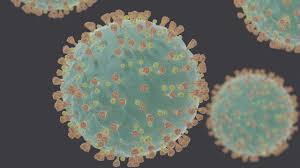This article is not my own. However, it is so worth reading, I asked the author if I could post it on my blog. Thus with his permission…here it is. 

This article was first published on Internet (Jain-list) in August 1997. Â Later on more information was added to this article.Dairy Visit in USA:I visited a dairy farm located on Route 2 north of Burlington, Vermont (USA) in May of 1995. Â The dairy owns approximately 150 cows. Â All of its milk production is used to make ice cream.Here is the summary of what I saw and learnt:It was milking time (5:00 PM) and the cows were being milked in 3.5 minutes each by a machine. This is done without regard to how hard it is on the cow. Â It was extremely difficult to watch the cows’ sufferings during the milking. Â The machine has no feeling. Â To extract the last drop of milk sometimes traces of blood get mixed with the milk.Since cows produce the most milk after pregnancy, they are kept pregnant for their entire fertile life through artificial insemination. Every morning hormones or drugs are injected into the cows. They are also fed a diet geared toward high production of milk. Â The dairy cow produces about 8 times the amount of milk a cow on the traditional family farm produces.The gestation period of cow is 9 months same as human does. Â If a male calf, of no use to the dairy industry, is born, he is shipped to the veal industry within two or three days of birth.The evening I was there, the farm was shipping three baby calves in a truck to a veal factory. Â The mother cows were crying when their babies were separated from them. Â I cannot forget the scene and can still hear the cries of the mother cows.The veal industry is the most cruel meat industry in the world. Â It produces very tender meat that is considered a delicacy. Â The baby calves are raised in darkness in a very confining crate, which allows practically no movements. Â They are fed an iron-deficient diet. Â This way the meat gets very tender and properly textured. Â They slaughter the baby calves after six months. Â There is much literature available about cruelty in the veal industry.Within two months of delivery, the cows are impregnated again. Â I did not have the stamina to watch the process of artificial insemination that the farm was showing off.About four to five times a year, this farm would take the cows outside for a walk. Â Otherwise, the cows are tied in one place and they have no choice but to defecate where they are confined. Â It badly stunk when I was there; the farm would wash the confinement areas once or twice a day, and the remaining times the cows would live in their own waste.The life expectancy of cows is about 15 to 20 years. Â However, after about 4 to 5 years, their milk production capacity drops significantly so these cows are sent to the slaughterhouse for cheap meat which is used in fast food restaurants, hot dog filler, dog & cat food and a variety of other “foodstuffs”. Â The rest of the body material (by products) turns up in the products like floor wax, pet food, medicines, insulin, gelatin, footwear, upholstery, taco filling, cosmetics, candles, and soaps.During her fertile life, cow delivers about four babies. Â Statistically only one female baby is needed to replace the existing cow. Â Hence all other babies (males or females) are sent to veal industry where they are tortured for six months and then slaughtered for the meat (delicacy meal).As I learned and observed the cruelty in the dairy industry, I at first found it hard to believe. Â On a personal level, I feared that it would be impossible for me to give up the dairy products and become vegan (absolutely no animal product). Â How could I eliminate milk, yogurt, butter, ghee, and cheese from my diet? Â To become vegan means that I cannot drink tea with milk, eat any Indian sweets, pizza, milk chocolate, ice cream, eggless but dairy-containing cake, and many other items.At this time I remembered my daughter Shilpa’s (who became vegan few months prior to my visit) word, “Dad, cows’ milk is for baby cows and not for humans or their babies. No other animal consumes the milk of another species. Â We do not have the right to consume the milk of other animals for our benefit by exploiting and torturing them. Â Furthermore milk and its products are not essential for our survival or for healthy life”.However, needless to say, the dairy farm tour made me an instant vegan.Pravin K. ShahJaina Education Committee ChairpersonDirector, Jain Study Center of North Carolina (Raleigh)education@jaina.orgwww.jaineLibrary.orOctober 26, 2009


4 Comments
kamal sharma · August 14, 2011 at 12:12 pm
WOW! Thought provoking. I might have to go the vegan way.
Heena Modi · August 18, 2011 at 2:08 pm
Let me know how you get on
kamal sharma · August 18, 2011 at 10:38 pm
Well well… I have not eaten meat for over 25 years and developed aversion to it when I was a kid. The thought of the ‘vegan way’ has crossed my mind umpteen times but I somehow can’t force myself to cross the line. Maybe I would observe a ‘Vegan Month’ in early 2012.
Heena Modi · August 19, 2011 at 4:39 pm
Could do. Can I share a PowerPoint with you? I don’t know how you’ll receive it but these visual aids are what helped me make a decision and stick to it. Let me know and I’ll send it to you if you so wish.
Comments are closed.